|
This page shows you some of the different color effects you can get using a simple piece of glass and some colored sheets. I used colored foam here but virtually any colored sheet will work. As is mentioned on the jewelry page, some objects don't look good when photographed on a colored surface. To prevent the background color from influencing the object's coloring, it's necessary to have the colored background well behind the object being photographed. This is easily and cheaply done with a simple pane of glass. The pane is supported below by a cardboard box. The back of the support is open. The area behind the support is covered by a sheet of vinyl. The vinyl isn't really needed but is provides a relatively continuous background free of distractions. These photos were taken in a darkened room. The lighting was bright enough that I could easily see what I was doing but the lighting was indirect so that it would not reflect off of the table. As you can see, the glass is at a slight angle (higher in the rear than in the front). This makes it a bit easier to get the background in the photo without seeing the rear edge of the glass. Please note that the glass being crooked on the supports is not intentional and makes no difference.
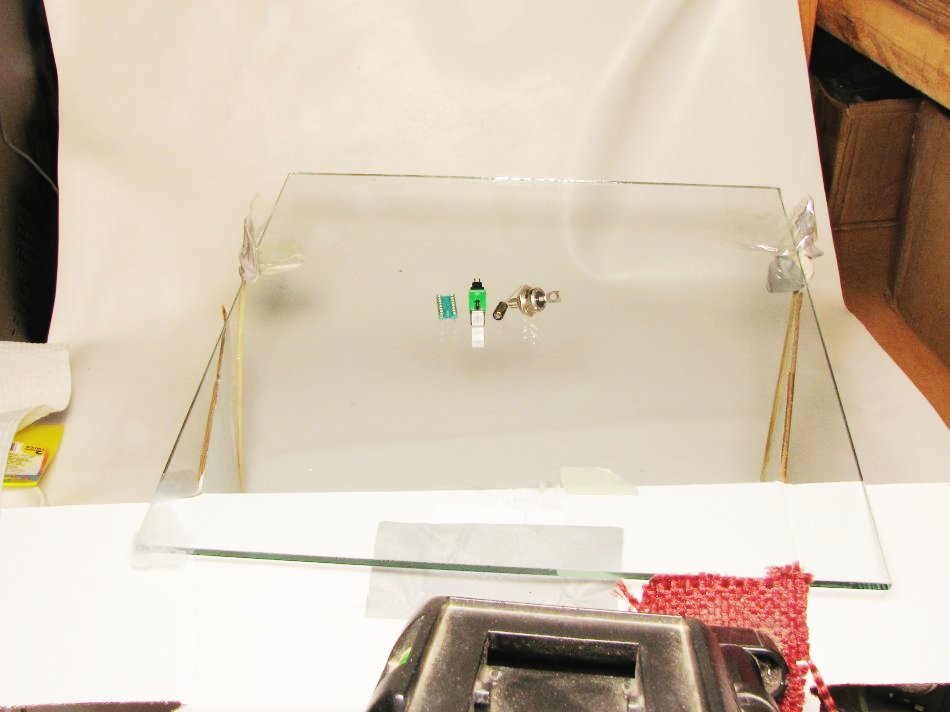
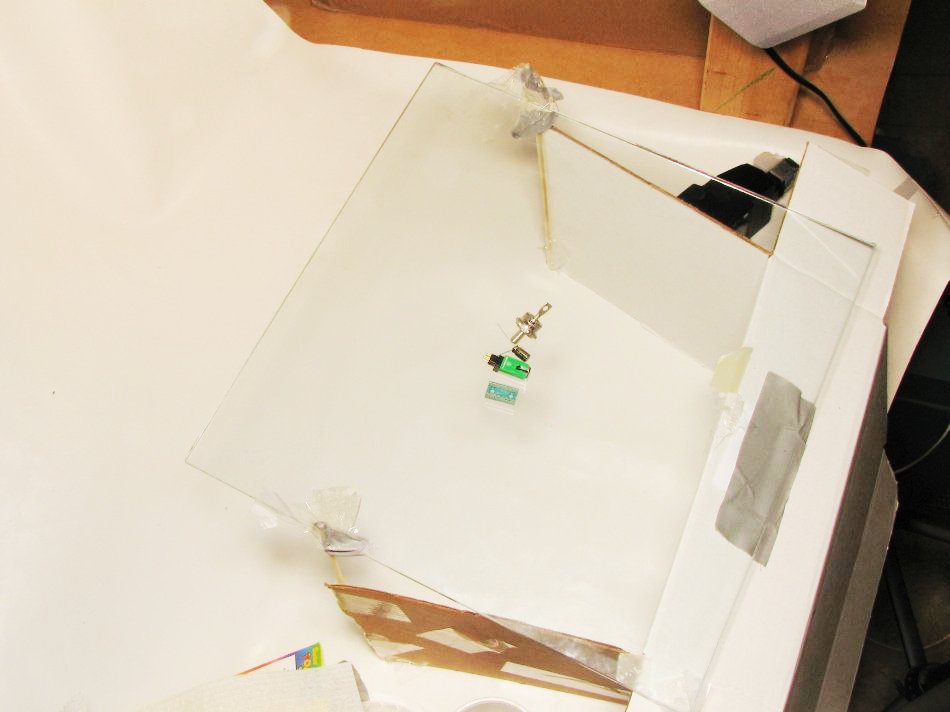
As I said at the beginning of this tutorial, I'll point out problems/mistakes that I've made (and this page has plenty) so you won't make the same ones.
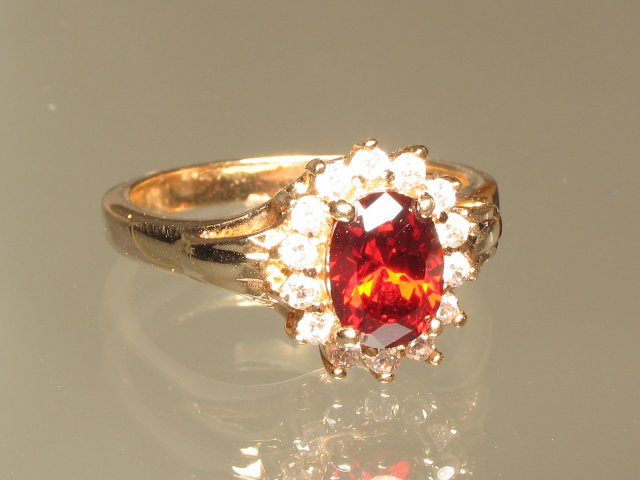
|
In this photo, you should immediately see that many of the stones are blown out. This makes this photo unusable for virtually anything other than showing my mistakes. The stones may look bright but there is so much loss of detail that you can't tell what they are.
This photo was shot on the table as seen above. The background was simply the white vinyl. Since very little light from the flash reached it, it looks gray. This is suitable for many instances where you simply want a background that's not distracting.
|
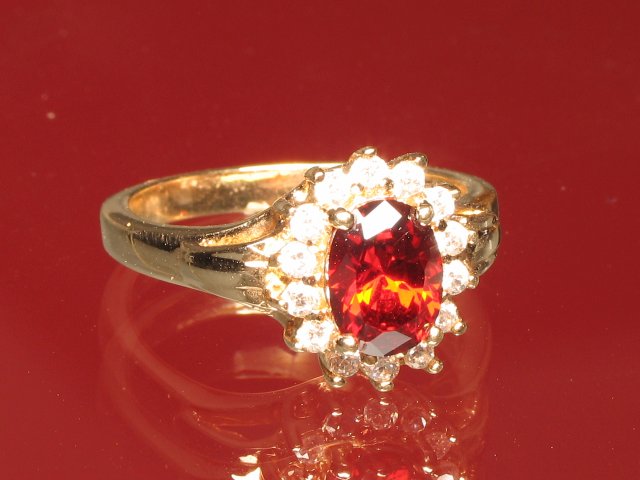
|
In this photo, the background is a red piece of foam approximately 18" back from the ring. You can see the setup here (minus the foam bowl on the table). When using clear plate glass, you will have two reflections. If these are undesirable, this method will not serve your purpose. If you want a single reflection, you need a smooth, reflective, opaque material or a first-surface mirror (a regular mirror will do the same as you see here but the second reflection will be very strong).
|
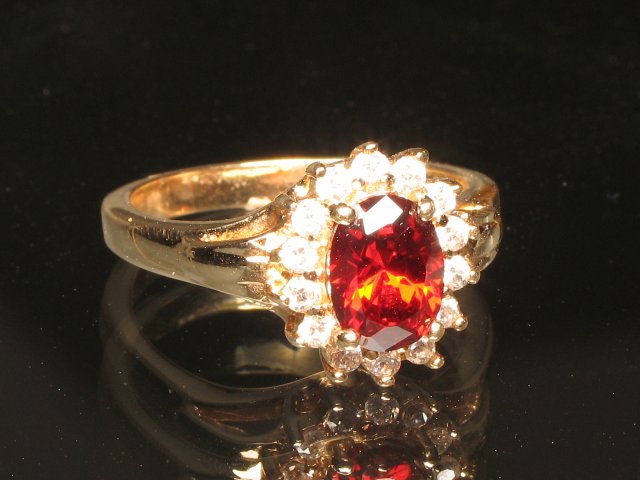
|
A black background was used for this photo. And there's another mistake. The glass is dusty. The glass must be absolutely clean (both top and bottom). The dust is virtually invisible to the naked eye but it will show up well when hit with the flash.
|
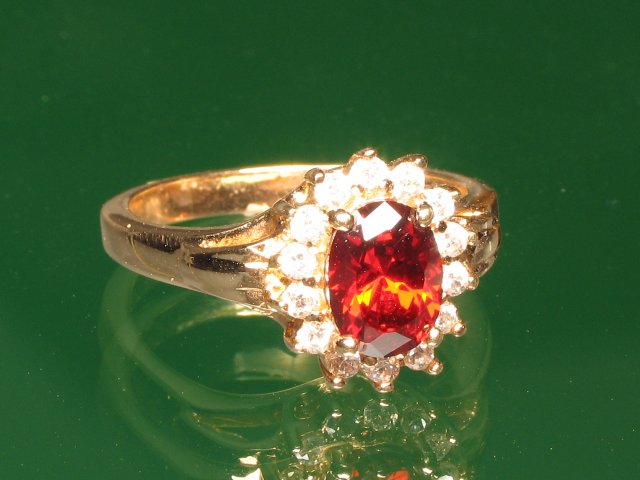
|
As it is with all of the backgrounds, this green background is much darker than the actual material.
Another mistake can be seen here (as in all of these shots of the ring). There is one hot facet. It's directly reflecting the flash. I should have moved the ring and camera until it went away.
|
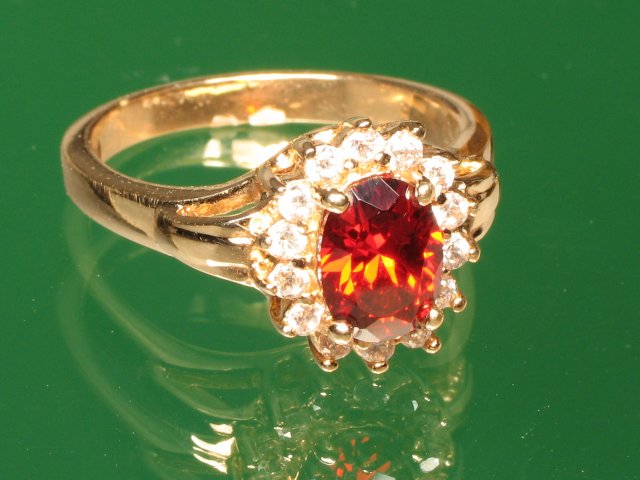
|
This one is a bit better. To get rid of the hot facet, I used a black piece of foam to block various parts of the flash diffuser until I found the area lighting that facet. I continued using smaller pieces until I found an area about 1/2" wide that was causing the problem. I placed a 1/2" wide piece of the foam on that part of the diffuser and had no more problems. You can also see that the stones are not as blown out. This is due to the different angle between the camera and the ring.
|
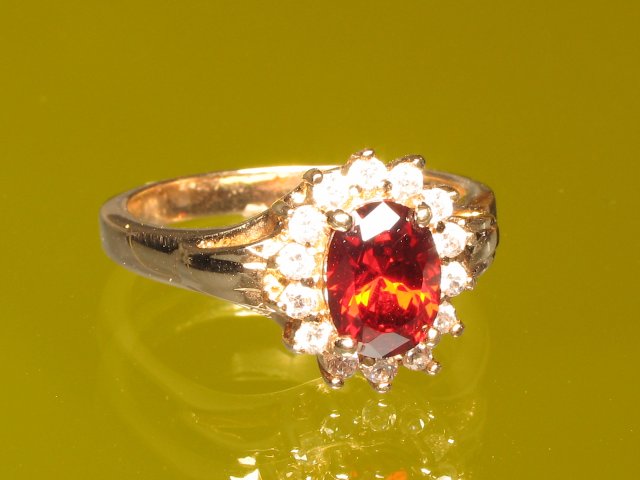
|
In my opinion, most of the previous backgrounds worked pretty well with this object. I don't think that's the case with this yellow background. It's important to pick a background that works well with the object being photographed. Fortunately, it's very easy to change the background color when using this type of setup.
|
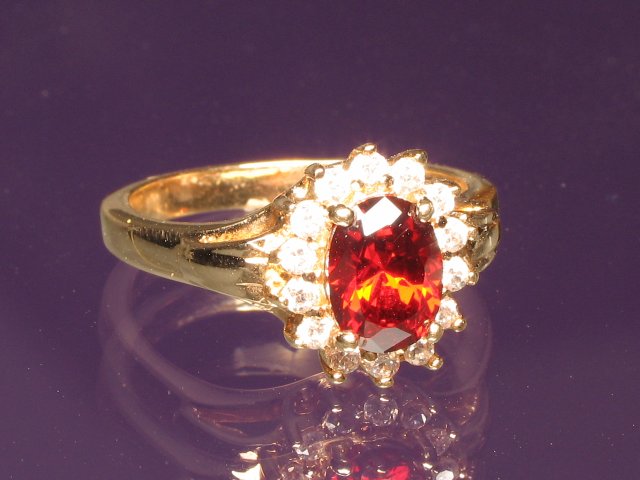
|
You can see that there is no color contamination using this method. Neither the stones nor the band have picked up the purple background.
|
|
Since the glass was at an angle, I used holding wax to prevent the ring from slipping off. It the table was never touched, the ring wouldn't slide but when changing the backgrounds, I kept bumping the glass and it would move. I wanted the same shot for all of the photos above so the wax was necessary.
|
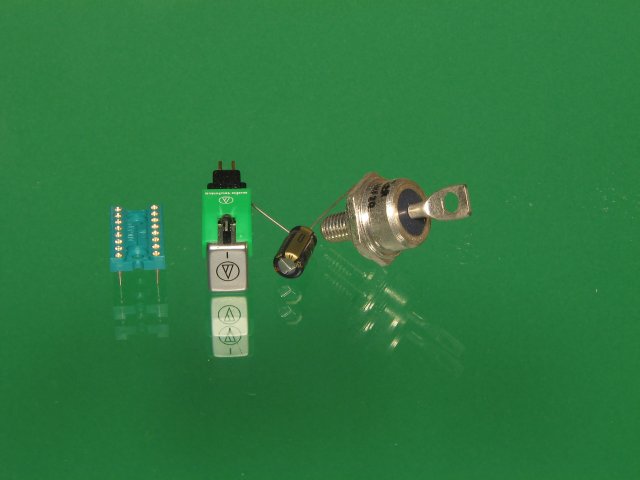
|
Another instance where the background color is wrong. It's not that the colors are 'really' bad together but the objects get lost in the background.
And try to get the subject centered in the photo. This could have been saved with cropping but that's not always an option.
|
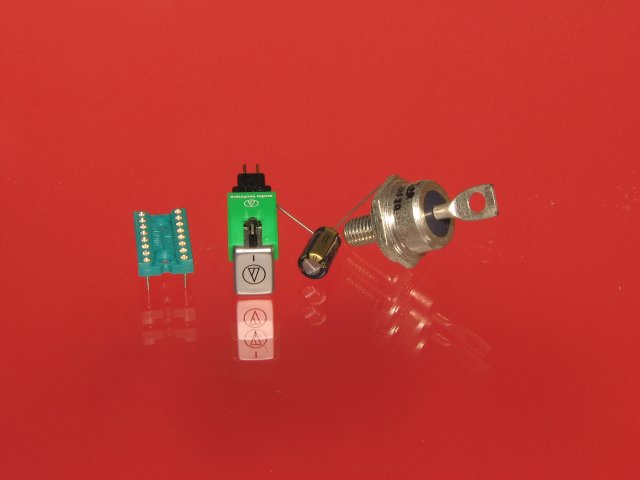
|
This is a somewhat better choice. Although the red is a bit distracting, the objects no longer get lost.
You probably noticed that the background is somewhat brighter than in the previous images. That's because the background material was hung from the back of the piece of glass. It was closer to the flash and at an angle that reflected more of the light so it looks brighter. As you can see, this setup is relatively flexible.
|
|
The next 4 photos also have the background hung from the glass.
|
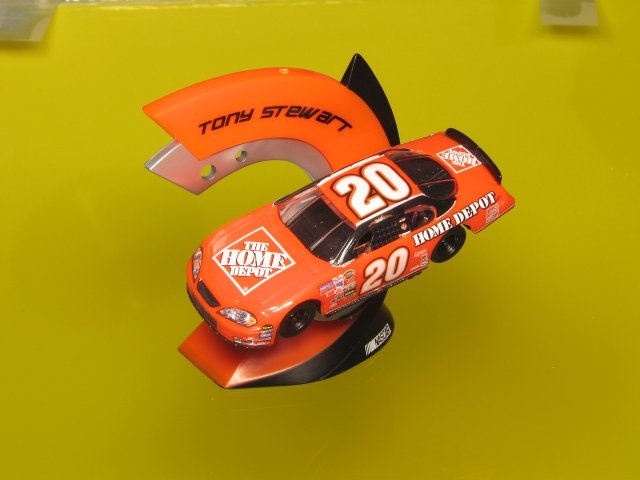
|
Try not to apply the tape where it's going to show in your photos.
|
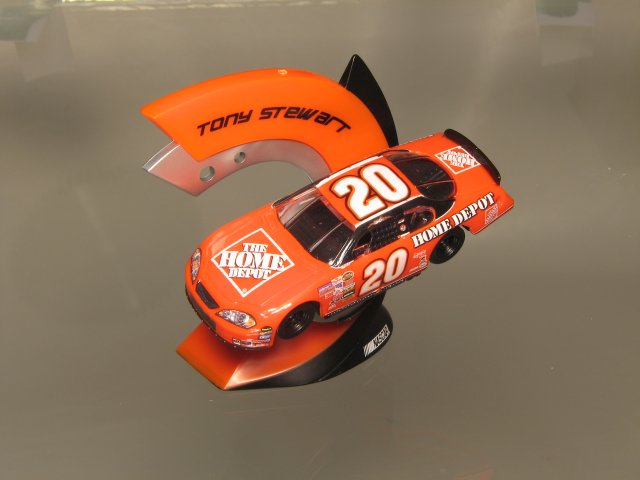
|
This is with no background other than the white vinyl on the table-top.
If you look closely, you can see the reflection of a 10" table-saw blade hanging on the wall. Make sure that you remove all table-saw blades from the wall directly behind the stage. :)
|
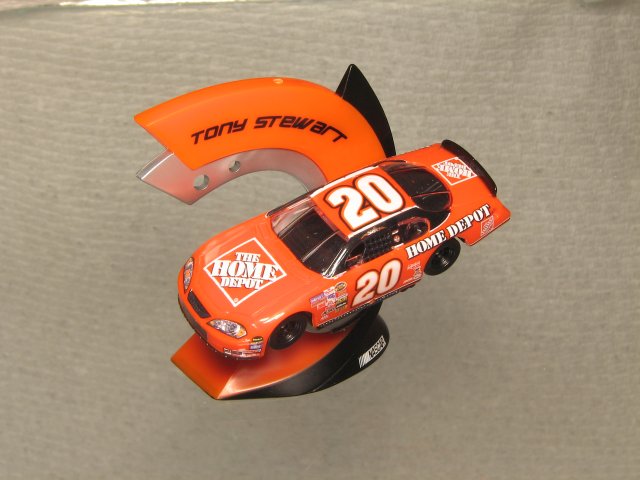
|
This photo used a paper towel for the background. Some work better than others. This one was embossed with a pattern that was too deep and it showed up too well. Don't be afraid to experiment.
|
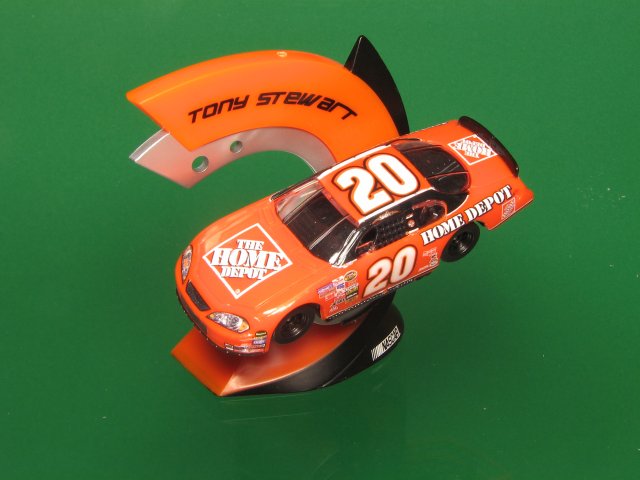
|
Of the background colors I had on hand, this is probably the best with this model.
|
|














